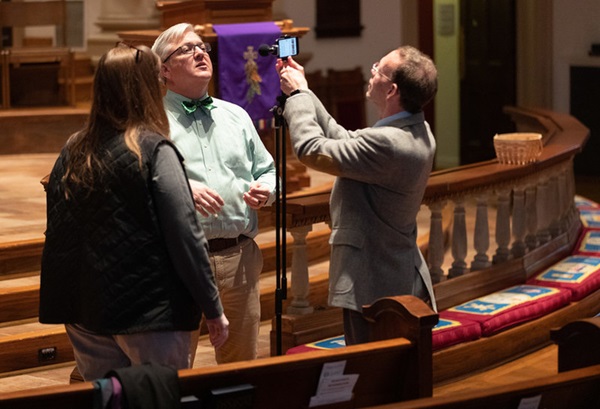Like so many other churches, the church I pastor intentionally stepped up its online presence as the coronavirus pandemic shut down a majority of church services nationwide. And like most churches, we were glad just to pull off a semi-functional service for our (for the time being) online church.
But as we prepare for this coming Sunday’s online services, we’re making several tweaks, changes that could benefit countless churches that are looking to stream exclusively online. Here are five tweaks to consider:
- Get better camera shots. Many churches put cameras in the least conspicuous place possible in the room, so as to not distract the live audience in the room. That typically leads to less than ideal camera shots. Now with no live audience, bring those cameras in closer. If you can’t get a tight shot of the speaker from the waist up, you’re not close enough. Bring the cameras halfway up the sanctuary aisle if needed. No one will be in the room to notice. Get better camera shots.
- Look directly into the cameras. When you’re speaking to a live audience, you look at the audience. But now that your audience is online, look to where the audience is: the camera. As odd as it might feel to speak or sing directly to the camera, it’s where your people are. Make eye contact through the camera and connect with your church.
- Invite online discussion. At the beginning of your service (and several times throughout), encourage and invite online engagement. If you’re streaming to Facebook Live, YouTube, Church Online or any other platform that has comment capabilities, encourage it. Ask a question and encourage people to comment. During prayer times, encourage people to share their own prayer requests. Discussion drives engagement. Encourage people to interact with you and with each other through the comments.
- Put your pastors and staff online. If you’ve got staff, say a children’s pastor or a youth pastor who doesn’t have programming to manage on Sunday morning, put them on that online service broadcast. Have them there to encourage discussion, interact with people and offer prayer for those that need it. Your pastors can still pastor, even online. (Note: In this present season, adhere to safer-at-home directives and social distancing for your geographic area.)
- Give your people something to click. What’s the next step from your online service? How do they connect with you? Is it an email? Is it an online guest card or connection card form? Is there an online giving option? Drive people to take a next step and connect with you by giving them an online option to do so.
Josh Daffern is lead pastor at Centreville Baptist Church, Centreville, Virginia. An author and speaker, his New Wineskins blog appears regularly at Patheos Evangelical. This post was first published on March 18, 2020, and is republished with permission.

